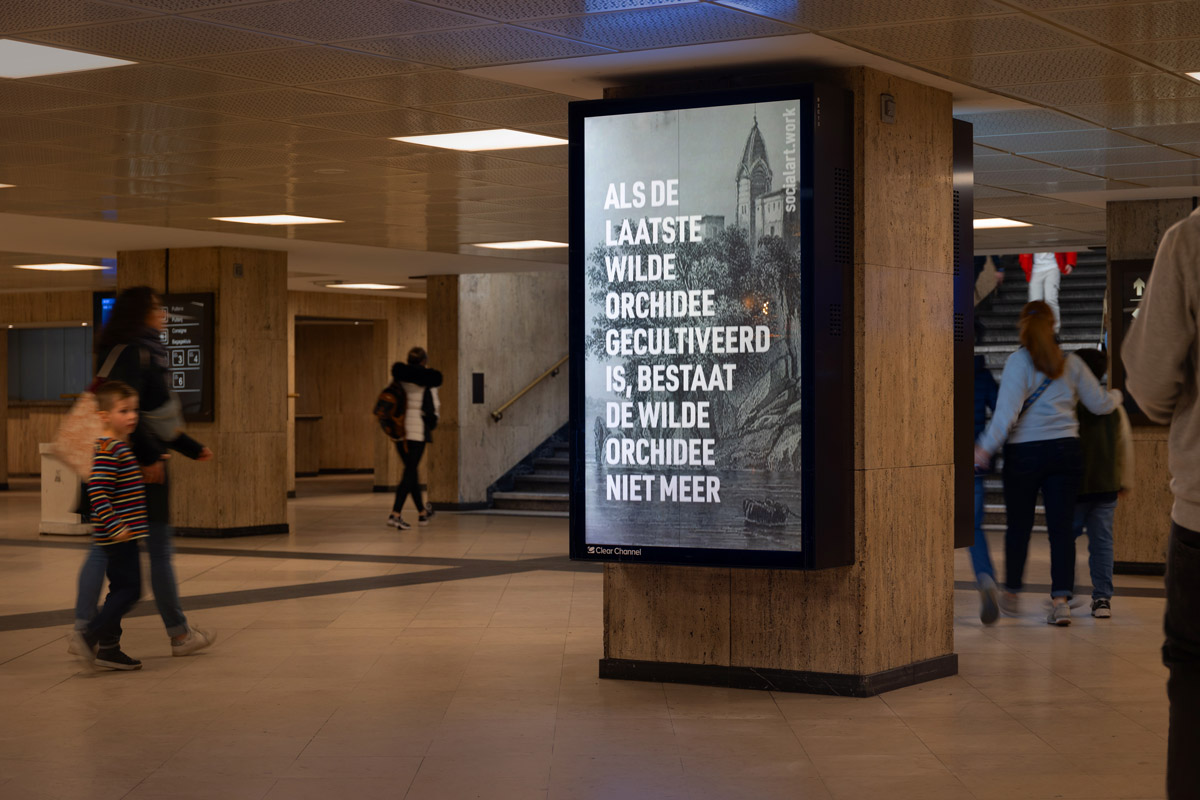We use the cookies _ga, _gat, _gid to collect anonymous data about how you use this site. OK.
Als de laatste wilde orchidee gecultiveerd is, bestaat de wilde orchidee niet meer, 2024
Als de laatste wilde orchidee gecultiveerd is, bestaat de wilde orchidee niet meer (When the Last Wild Orchid Is Cultivated, the Wild Orchid Exists No More)
marks the 100th anniversary of the publication of the first manifesto of surrealism.
The Franco-German poet Yvan Goll (1891-1950) published surrealism's very first manifesto in his own magazine
Surréalisme
14 days before the appearance of André Breton's (1896-1966) more famous version.
In place of Breton's emphasis on dreams and chance, Goll advocated a critical evaluation of the inherent nature of reality. If reality’s make up can be understood more fully, it will also be possible to discern its lowest and highest forms with greater facility.
A certain type of whimsy emerges when one examines closely the underlying facts of reality as we experience it in everyday life. Goll’s surrealist facts really are stranger than Breton’s fiction.
Als de laatste wilde orchidee gecultiveerd is, bestaat de wilde orchidee niet meer (When the Last Wild Orchid Is Cultivated, the Wild Orchid Exists No More)
is a critical assessment of the value we ascribe to a thing and how that value can be altered, or even destroyed, by our desire for it and our actions as a result of it.
We desire the wild flower because of its wild beauty, it fragility, its scarcity, its inaccessibility. But it is also a reality of human nature that when we desire something we feel compelled to possess it as completely as possible. So we grow the wild flower in a heated glasshouse in order to make it our own. We control the wild thing absolutely by bringing it under cultivation. If it then disappears from the wild (when our back is turned, as it were), though the plant itself persists, in reality, its wild form has been lost forever.
That truth reflects a distinctively Gollian-surrealist grasp of reality, as profound as it is absurd, so qualifying wholeheartedly for the appellation
surrealist
as Yvan Goll conceived it.
Visually the artwork repurposes a found illustration titled
Fakir's Rock
from
Indian Empire Illustrated
(1858) by Robert Montgomery Martin. The implied allusion to India, remoteness (and the British Empire's attempts to 'tame' the continent) further underlines the absurdity of human desire and its concomitant behaviour.



